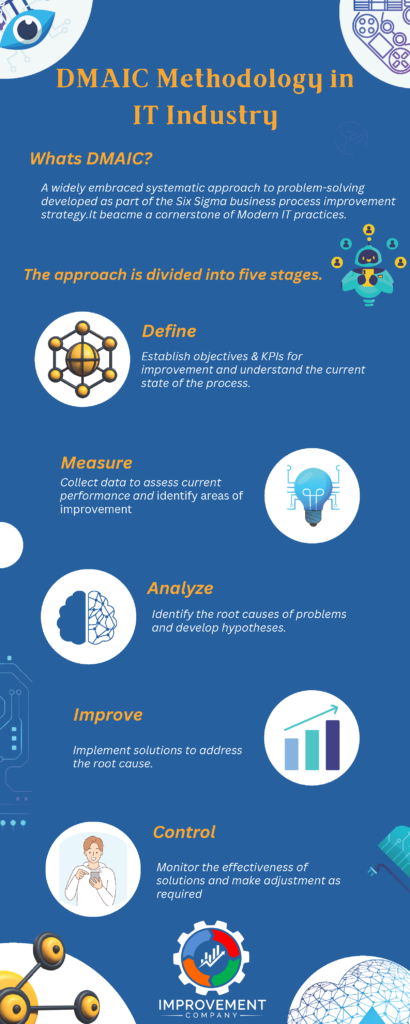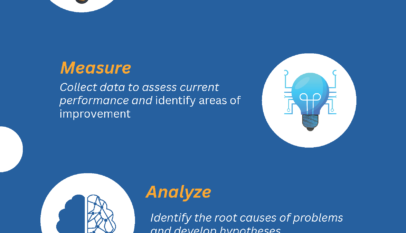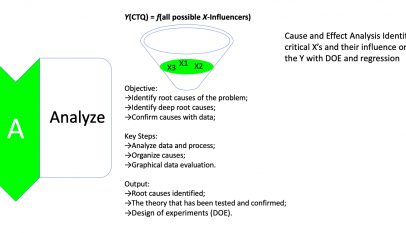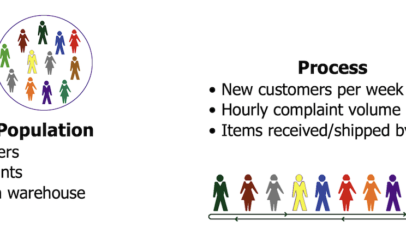Looking to improve the IT industry? The DMAIC methodology can help. DMAIC is a systematic approach to problem-solving developed as part of the Six Sigma business process improvement strategy. It can provide a clear roadmap or benchmark for efficiency, making decision-making easier for stakeholders.
In this post, we’ll discuss how DMAIC have successfully implemented by businesses in their IT departments to increase quality assurance and deliver more reliable products and services.
Introducing the DMAIC Methodology – What is it and Why Is It Used in the IT Industry
The DMAIC methodology is a widely embraced process improvement framework in the IT industry. This approach helps organizations identify and eliminate inefficiencies, defects, and variations in their processes by breaking down complex problems into manageable steps.
The methodology comprises five stages – Define, Measure, Analyze, Improve, and Control – which empower teams to analyze data, identify root causes, and implement solutions that drive continuous improvement. DMAIC fosters a data-driven decision-making and collaboration culture, enabling organizations to achieve better outcomes. As a result, it has become a cornerstone of modern IT practices.
Define Phase – Establishing Objectives and KPIs for the Improvement Process
In any improvement process, defining objectives and KPIs is crucial to success. The Define Phase provides the foundation for improvement, allowing teams to establish clear and measurable goals. With a well-defined purpose, modifications become aimless, and progress is easier to measure. Defining KPIs helps to ensure that teams stay on track, providing a clear picture of how successful the improvement process is. By establishing objectives and KPIs during the Define Phase, teams can set themselves up for success and ensure every step is in the right direction.
Measure Phase – Collecting Data to Assess Current Performance
To improve a process, it’s essential first to understand how it’s currently performing. That’s where the Measure phase comes in. During this critical step in the Six Sigma methodology, data is collected to assess the current state of the process accurately. This information is crucial because it provides a baseline for improvement efforts. With it, it’s possible to know if the changes make a difference. The data collected can come from various sources, including machines, people, and paperwork. Once all the information has been gathered, it can be analyzed and used to identify areas for improvement. By taking the time to collect and assess data accurately, businesses can make informed decisions that lead to more efficient and effective processes.
Analyse Phase – Identifying Root Causes of Problems or Issues
Regarding problem-solving, the Analyze phase is critical in identifying the root causes of issues. This stage thoroughly analyses data, gathers facts, and examines patterns and trends. By doing so, businesses can uncover the underlying causes of problems and devise practical solutions to address them. The Analyze phase is an essential step in the problem-solving process and can make all the difference in finding lasting solutions that help businesses thrive. So, if you’re grappling with a persistent issue, taking the time to identify the root cause can lead to a brighter future for your organization.
Improve Phase – Implement Solutions to Address Root Causes
When solving problems, addressing the issue’s root rather than just treating the symptoms is essential. That’s why the improvement phase is crucial in continuous improvement. This is where we implement solutions that directly target the underlying causes of the problem.
By doing so, we can ensure that the issue won’t keep popping up again. It’s a proactive approach that can save us time, resources, and frustration in the long run. Plus, it allows us to make real progress and improve our processes, products, and services meaningfully. So, let’s roll up our sleeves and get to work!
Control Phase – Monitoring Effectiveness of Solutions and Making Adjustments as Needed
The Control Phase of any project is crucial in ensuring the solutions’ effectiveness. By monitoring these solutions, any inconsistencies or malfunctions can be quickly identified, allowing appropriate adjustments. This phase helps ensure the project stays on track and meets the goals set in the planning phase. Without regular monitoring and adjustments, the project could quickly slide off course, resulting in missed deadlines or unsatisfied stakeholders. Therefore, by staying diligent in the Control Phase, teams can guarantee that the project achieves its intended outcomes and stays on the path to success.
Final Thought
The DMAIC methodology’s success in the IT industry lies in its ability to make sound improvements to existing systems and processes. By utilizing this management process, companies can identify where improvements can be made that benefit customers and end users alike. The goal is the perfect balance between freedom of expression and spending money – and it’s well within your grasp. So start taking notes on how you will apply the DMAIC Methodology today!
Establish objectives and KPIs for improvement, measure current performance, analyze root causes of problems or issues, implement solutions that address them, and monitor effectiveness to gradually improve your product or service. Therefore, take advantage of this systematic way of managing business problems while working toward long-term success for your IT team.



















This is a fantastic overview of the DMAIC methodology and its significance in the IT industry. DMAIC, as you’ve elaborated, provides a structured and data-driven approach to problem-solving and process improvement, which is invaluable in an industry as dynamic and complex as IT.